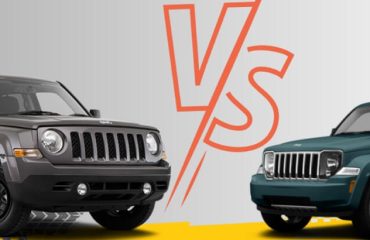
Hey there, fellow car enthusiasts! Are you in the market for a crossover SUV that’s as ready for a grocery run as it is for a gritty trail? Let’s chat about the 2016 Jeep Patriot. This ride is a true buddy for those of you in Butler, Kinnelon, and Bloomingdale looking for a vehicle that’s not afraid to get a little mud on the tires.
A Peek Under the Hood
The Jeep Patriot isn’t just another pretty face in the parking lot. With two trim levels, Sport and Latitude, you’re getting a vehicle that’s flexible. Standard is a 158-horsepower 2.0-liter four-cylinder engine paired with a five-speed manual transmission. It’s zippy on the highway and nimble off the beaten path.
Products are available — click below to view them!
SEE DETAILS ON EBAY
Need more oomph? The Patriot also comes with a 172-horsepower 2.4-liter four-cylinder option. And let’s talk transmissions: besides the manual, there’s a two-speed continuously variable transmission and a six-speed automatic. These are all about smooth sailing and efficient drives, whether you’re cruising downtown or adventuring off-road.
Off-Road Ready
The Patriot steps up with two 4X4 systems: Freedom Drive I™ and Freedom Drive II™. It’s like having a trusty sidekick for when the going gets tough. Freedom Drive II® even comes with a selectable locking Off-Road mode and Hill Descent Control, so steep slopes? Pfft, no sweat. This Jeep laughs in the face of snow, mud, and rocks.
Inside the Comfort Zone
Hop inside, and you’ll see the Patriot is more than just brawn. With snazzy chrome accents and an optional leather-wrapped steering wheel, this Jeep mixes luxury with its rugged charm. The seats are like a firm handshake with a soft touch – supportive and comfy for all your journeys.
Tech-wise, it’s all about the Radio 430 NAV system. It comes with a one-year Sirius XM® Satellite Radio subscription, a 6.5-inch touchscreen, and Garmin® GPS Navigation that talks you through every turn. Plus, an audio input jack means your playlists are always part of the trip.
2016 Ford Escape: The City Slicker
Now, let’s talk about the 2016 Ford Escape. With its S, SE, and Titanium trims, it offers a consistent drive and a four-cylinder engine that’s good for daily errands. The Escape’s fuel economy is on par with the Patriot’s, but when the weather turns nasty, it might not hold its ground as well.

Cozy, But Not As Spacious
The Escape tries to charm with premium upholstery and tech like the SYNC 3® system. But, it’s a bit snug inside. The seats might have you shifting around on long trips, and legroom isn’t exactly generous. Storage space? It could use a bit more. And, if you’re the driver, reaching for those base controls can be a stretch, literally.
Jeep Patriot vs. Ford Escape: The Showdown
Alright, let’s break it down with a side-by-side comparison chart of the Jeep Patriot and the Ford Escape, so you can see exactly what each ride brings to the table.
| Feature | 2016 Jeep Patriot | 2016 Ford Escape |
|---|---|---|
| Engine Power | 158 hp (2.0L) / 172 hp (2.4L) | Comparable standard four-cylinder |
| Off-Road Capabilities | Freedom Drive I™ and II™ 4X4 systems | Standard front-wheel drive |
| Interior Comfort | Chrome accents, optional leather, supportive seating | Premium upholstery, SYNC 3® system, firm seating |
| Tech and Entertainment | Radio 430 NAV system with Sirius XM® | SYNC 3® multimedia system |
| Cargo Space | More generous cargo area | Less cargo room |
| Transmission Options | 5-speed manual, 2-speed CVT, 6-speed automatic | Standard 6-speed automatic |
| Fuel Economy | 30 MPG combined (EPA-estimated) | Comparable EPA-estimated fuel economy |
When you’re weighing your options, it boils down to what you want out of your crossover SUV. The 2016 Jeep Patriot is a rugged charmer with a soft side for comfort and tech. It’s the SUV that invites you to take the road less traveled. The Ford Escape, while cozy and efficient, might leave the adventurers among you wanting more.
So, are you ready to take the plunge with a Patriot, or does the Escape seem more your speed? Whichever path you choose, make sure it leads to the kind of drive that makes you happy every time you turn the ignition. Safe travels and happy trails, friends!
Why Compare?
You know, when folks are out there comparing the Jeep Patriot and the Ford Escape, it’s like trying to pick your favorite dessert at a super cool diner. They both look good, and you just know they will hit the sweet spot, but in slightly different ways. The Patriot and the Escape are both solid picks from the crossover SUV menu, but each has its own flavor.
Think of the Jeep Patriot as that classic apple pie – it’s got that all-American, adventurous spirit with a crust of off-road readiness. It’s the SUV that doesn’t mind getting its wheels dirty and is always game for a spontaneous camping trip. Plus, its generous cargo space is like the scoop of ice cream on top – the perfect extra touch.
On the flip side, the Ford Escape is like a smooth chocolate mousse – sleek, a bit more refined, and great for those who stick to the city streets. It’s got a comfy setup inside and some neat tech that makes every drive a treat. But when the road gets a bit rocky, or you need to pack in more gear, it might not satisfy that hunger quite like the Patriot does.
So really, when people weigh these two against each other, it’s all about taste. Do you want the rugged reliability of the Patriot or the smooth and steady Escape? Whichever one you pick, it’s all about what makes your drive a little sweeter.







